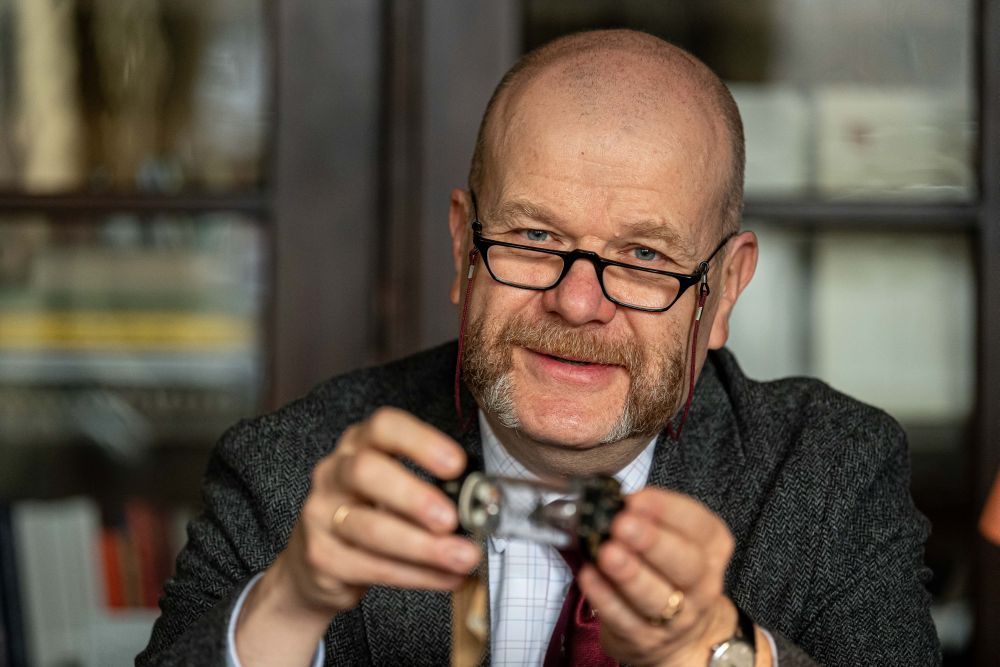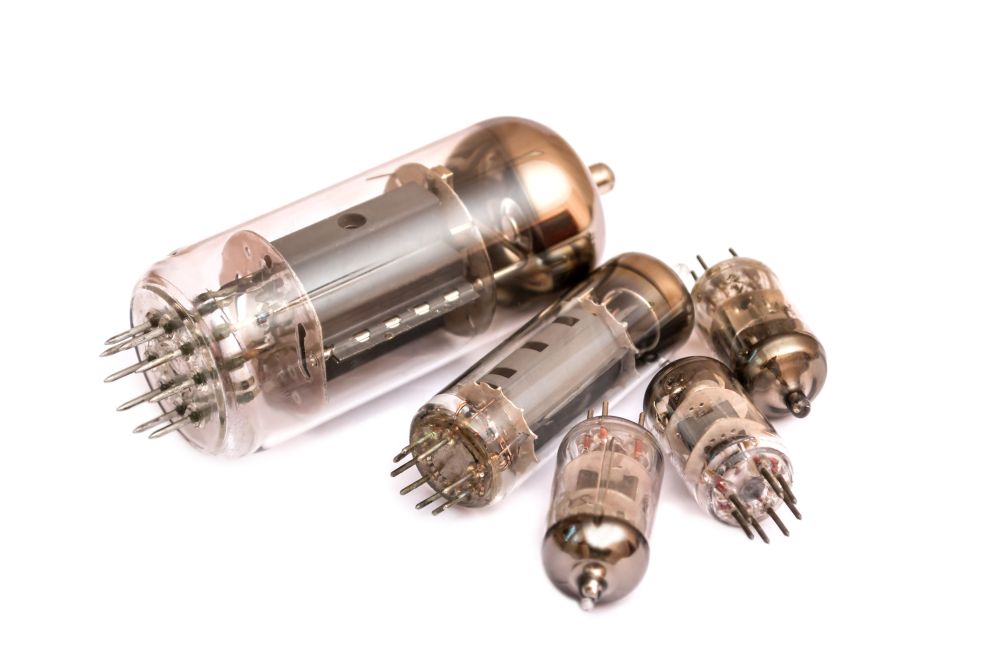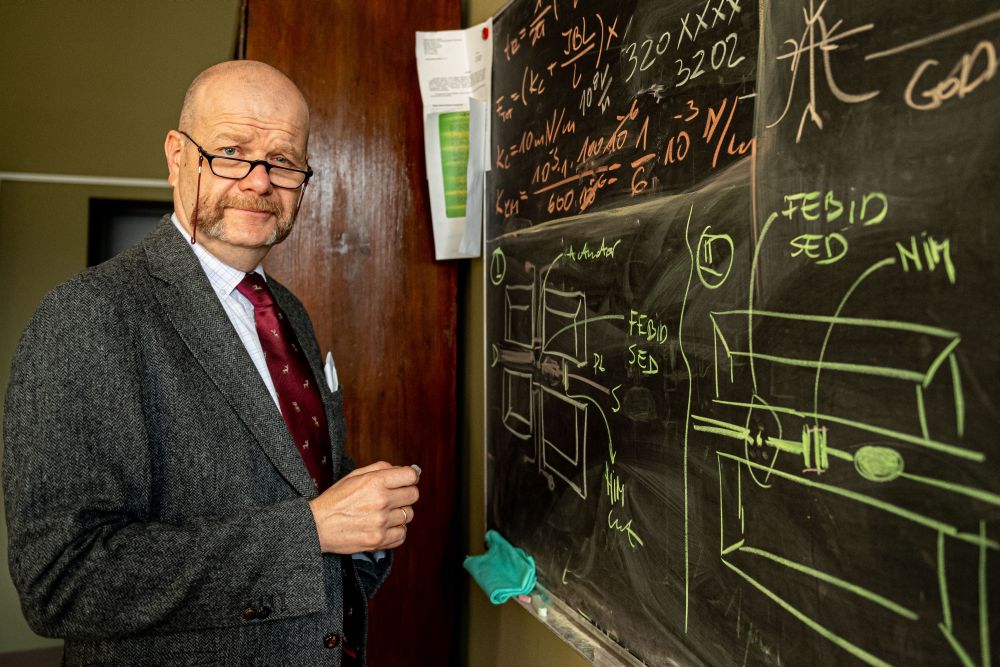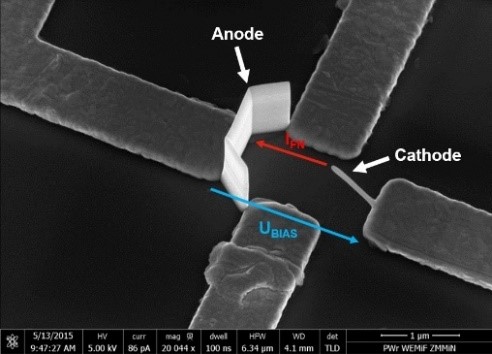YOUR BROWSER IS OUT-OF-DATE.
We have detected that you are using an outdated browser. Our service may not work properly for you. We recommend upgrading or switching to another browser.
Date: 15.04.2021 Category: general news, science/research/innovation
Electron tubes in the nanoscale? Prof. Teodor Gotszalk from the Department of Nanometrology at the Faculty of Microsystem Electronics and Photonics will work together with Berkeley researchers on the design of such nanoelectronic systems.

The professor, an expert on nanometrology (i.e. the measurement of micro- and nanostructures), has become a fellow in the Kościuszko Foundation, which supports scientific exchange between Poland and the USA. Thanks to the organisation's funding, our scientists have the opportunity to conduct research at renowned universities such as Stanford University, Harvard, Yale, MIT, and the University of California at Berkeley.
– I’ve been to Berkeley many times, virtually on each of my visits to America, also during my Fulbright Program fellowship, which I spent at the University at Albany. I managed to present our results several times, and I met many well-meaning scientists who found time to talk to me and exchange experiences. Each time I came back from there with my mind full of various ideas, more or less crazy, and – in the late 1990s – even with my suitcases full of various scientific papers I’d photocopied – admits Prof. Teodor Gotszalk, Head of the Department of Nanometrology.
He adds that the atmosphere of scientific restlessness and freedom there suits him very well. – I remember a picture I saw a dozen or more years ago. I walked out of one building on the Berkeley campus and saw groups of students on the lawn, each reading something. It would have been embarrassing not to have a book in your hand – says Professor Gotszalk.
The researcher plans to go to Berkeley in January next year. He will collaborate with laboratories there at the Department of Materials Engineering and with the nearby Lawrence Berkeley National Laboratory, specifically, the National Center for Electron Microscopy established there.
Prof. Gotszalk’s trip is connected with a new direction of research initiated at the Department of Nanometrology. The team from Wrocław University of Science Technology wants to use electron microscopy techniques to develop vacuum nanoelectronic systems – a type of nanotube whose construction draws on old vacuum tubes.

– These classic tubes, which look like glowing bubbles, have been known and used in electronics for many years. Of course, we’re not interested in the development of tube amplifiers, which I’m sure everyone has seen in their lives. We intend to build tubes using an electron beam in the nanoscale. The small structures will be able to operate at extremely low supply voltages; they will be much faster and able to operate in integrated circuits. We will achieve effects that were impossible to obtain with classic solutions – says Professor Gotszalk.

He adds that his team intends to work on applying systems of this kind as electron-emission coolers. According to estimates, they should be able to cope with the cooling of single nanostructures provided with proper thermal insulation, such as transistors and perhaps even single qubits.
Professor Gotszalk's team has already established multidimensional cooperation in the field of nanostructures with institutions including the Technical University Ilmenau in Germany, ETH Zurich in Switzerland, or the Institute of Microelectronics and Photonics of the Łukasiewicz Research Network in Warsaw.
At Berkeley, he plans to use the university’s apparatus and technology to study structures designed at WUST. – The elements that make up these nanotubes have very interesting properties, which we observe using our methods in our laboratory. As for our work at Berkeley, we want to see these properties using advanced electron microscopy. Dr Frances Allen from Prof. Andrew Miner’s group has already carried out such initial research with our partners from Germany, so the Berkeley team already knows what we’re working on – explains the researcher.
The scientist explains that the electronic nanostructures deposited using an electron beam can be compared to raisins in a cake.
–The raisins are nano-grains of metal and the cake is a carbon system that can take on different structures depending on the process; it seems that for us the best system would be fullerenes binding the metal grains together. Depending on the structure of such a system, the electrical properties measured at the terminals of the system change, as we have already been able to observe at Wrocław University of Science and Technology. And how does the carbon structure become arranged? Well, this is exactly what’s worth a thorough investigation – believes the WUST scientist.
 He hopes that his time at UC Berkeley will not only contribute to the further development of nanotube research but also allow the young researchers in the department he heads to establish a lasting collaboration with the team in the US and several European centres
He hopes that his time at UC Berkeley will not only contribute to the further development of nanotube research but also allow the young researchers in the department he heads to establish a lasting collaboration with the team in the US and several European centres
– In September this year, when the pandemic situation in the world calms down, we’re planning to organise in Wrocław an international conference dedicated to ion technologies – EUFN 2021, with specialists from various countries, including the USA – announces Prof. Gotszalk.
He adds that in a field as advanced as nanoelectronics, it is impossible to bring together all the technologies and capture the whole knowledge of the world in one laboratory.
– Cooperation between centres is essential. Different groups are well versed in specific issues and don’t need to explore technologies that someone has already developed. It’s better to learn from others' experiences and share your own. This is how it works in the world of science, or at least it should – believes Head of the Department of Nanometrology.
Our site uses cookies. By continuing to browse the site you agree to our use of cookies in accordance with current browser settings. You can change at any time.